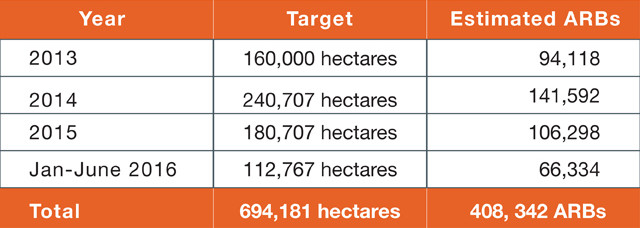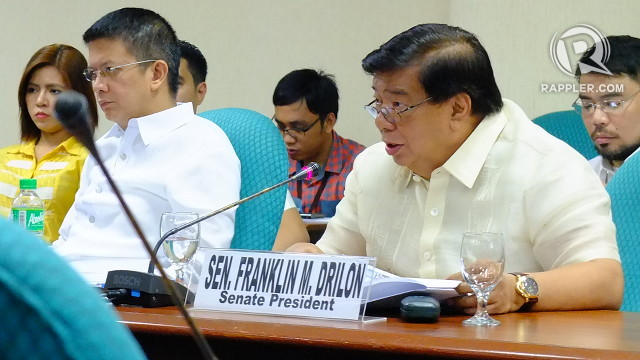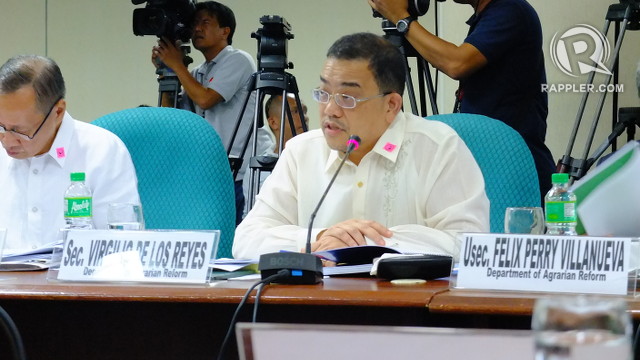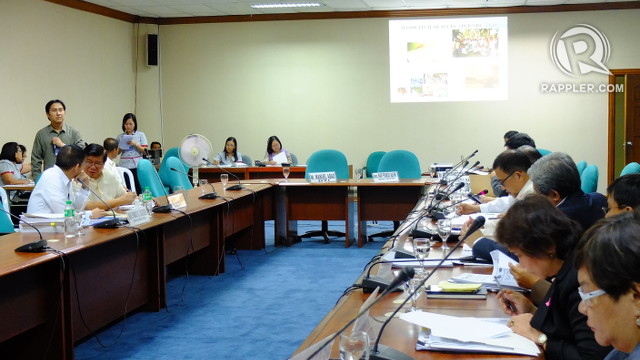SUMMARY
This is AI generated summarization, which may have errors. For context, always refer to the full article.
MANILA, Philippines – Senate President Franklin Drilon grilled Agrarian Reform Secretary Virgilio de los Reyes during the department’s September 3 budget hearing on his department’s ability to distribute its target number of hectares by the end of 2013.
“You didn’t reach your 2012 target. What makes you confident that you can actually distribute 160,000 hectares in 2013?” Drilon asked at the end of De Los Reyes’ budget presentation.
The slowness of adjusting to “recalibrated systems” within the Department of Agrarian Reform (DAR) and lack of coordination with other agencies implementing the Comprehensive Agrarian Reform Program Extension with Reforms (CARPER) were major reasons why the department failed to meet last year’s target, said De Los Reyes.
READ: CARPER at 25: Beyond land distribution
Of the 179,000 hectares of land targeted for distribution in 2012, they were only able to distribute 115,000 hectares or 64%.
“When we came in in 2010, the computerization of the Land Registration Authority was almost done. Unfortunately, we looked at the systems and the systems inside the department did not correspond to the computerization of the LRA,” explained the secretary.
Because of this inconsistency in records, DAR continues to face incongruencies between number of staff and the amount of hectares distributed in a given area.
“We have a strange situation of places like Negros Occidental with the target of more than 100,000 hectares with only 200 people and we have a target in Region I of around 2,500 hectares with around 500 people.”
Lack of coordination
Lack of coordination with CARPER implementing agencies – like the Land Registration Authority (LRA) and the Department of Environment and Natural Resources (DENR) – has led to overlaps in land records and titles.
In some cases, the land data computation and land titles are missing. Titles have even been issued over forestlands which are non-alienable and non-disposable, or lands which should not be distributed under CARPER.
Drilon latched on to this particular complication.
“You mentioned problems with the LRA, DENR. You haven’t mentioned problems with the NCIP (National Commission on Indigenous Peoples), which issues titles over forestlands. This could come into conflict with distribution of CARP-able lands or public lands. What kind of coordination are you doing? I understand that in certain parts of the country, it has become violent when you talk about land tenures. The indigenous people are claiming that these are lands awarded to them by the NCIP,” the Senate President said.
“With that, I do not know how you can achieve your targets.”
But De Los Reyes assured the senator that a new system will ensure there is no overlap of titles given by DAR, DENR, and NCIP.
“For the future, we have a system in which there is a certificate of no overlap coming from the DAR, DENR, and NCIP. So that in case there is a CATD (Certificate of Ancestral Domain Title) to be issued, that is first cleared with DAR and DENR. And before we issue a CLOA (Certificate of Land Ownership Award), we also send it to the local NCIP and DENR.”
If there is an overlap, “a joint team composed of DAR, DENR, and NCIP will find out which implementing agency should cover the land.”
CARP status
De Los Reyes reported that 694,181 hectares of land remains to be acquired and distributed under CARPER by 2016. This land will go to 408,342 farmer beneficiaries.
As of June, 60,000 hectares have already been distributed by DAR, making De Los Reyes “confident” that they will meet the target of 160,000 hectares this year.
Here is the target number of distributed hectares and agrarian reform beneficiaries (ARBs) from 2013 to 2016:

Starting 2012, DAR has sent out notices of coverage to all landholdings in their database.
“We have posted this in the website. And if there is a failure of personal or substituted service, we will publish this in the newspapers in general circulation. We have invited also NGOs and civil society groups such that if there is any landholding which is not in our database right now, they can tell us so that we can send them notices of coverage,” he explained.
Goals for 2013 to 2016
The DAR’s 2014 budget is P20.003 billion.
Maintenance and Other Operating Expenses or MOOE was given the biggest chunk of the pie: P13.013 billion or 65%. This includes P5 billion given to Land Bank of the Philippines to be paid to land owners whose land is covered by CARPER.
Under the CARPER system, only a portion of the value of the land is paid to the land owner. The rest are in bonds also from the Land Bank. The bond portion is automatically appropriated because this is a debt of the government.
The DAR budget is part of the P21.36 allotted to CARPER. CARPER’s budget also includes P709 million to DENR, P299 million to LRA, P270 million to National Irrigation Administration and the Department of Trade and Industry.
The DAR’s goals from 2013 to 2016 include improved land tenure security for its farmer beneficiaries which they hope to accomplish by improved coordination among CARPER implementing agencies involved in land acquisition and distribution,
The department also aims to create sustainable livelihood for beneficiaries by supporting agrarian reform beneficiary groups in farm management, financial management, credit worthiness through field-level training, coaching and mentoring activities.
They will also create infrastructure projects to improve farm yields and productivity. 1,500 kilometers of farm-to-market roads will be built to help farmers maximize their crops.
To 2,524 beneficiary organizations, the department aims to provide agri-extension, business development services, and common services facilities. 1,598 beneficiary organizations will also receive agriculture production credit and micro-finance services.
Another target is the provision of agri-insurance subsidies to 722,763 beneficiaries. – Rappler.com
Add a comment
How does this make you feel?



There are no comments yet. Add your comment to start the conversation.